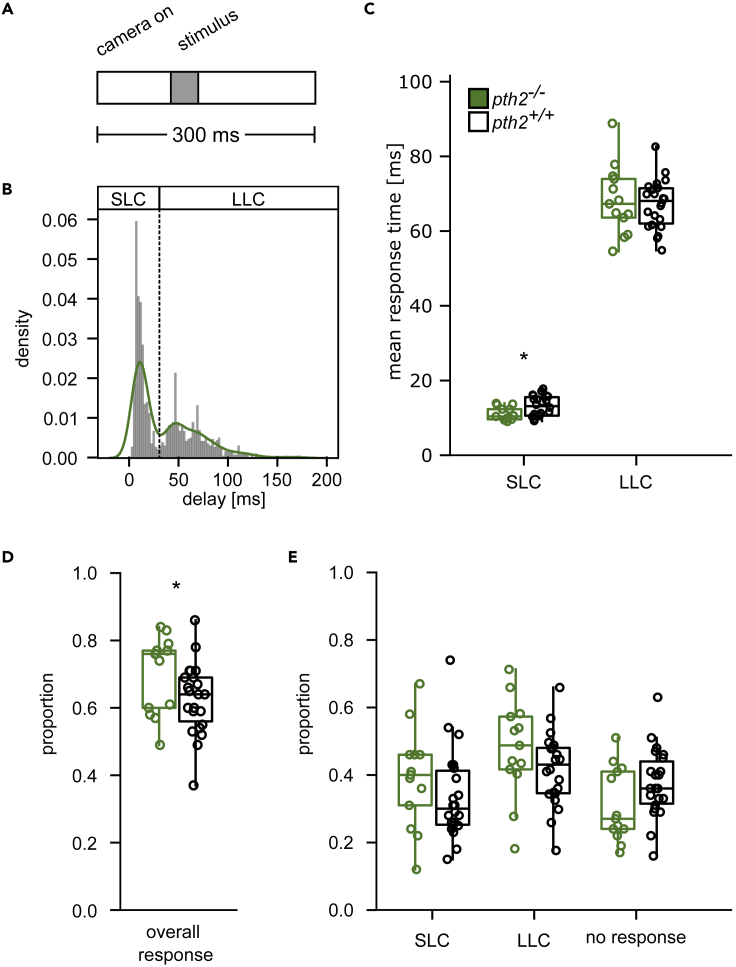Fig. 2
pth2?/? fish display increased startle propensity
(A) Experimental scheme. Ten larval fish (5 dpf) were recorded with 500 Hz for 300 ms. After a baseline of 100 ms, a 40-ms pulse was delivered using a bass shaker.
(B) The histogram and overlaid kernel density estimate show the delay with which animals respond after the onset of the stimulus with a C-start. We recorded 1613 escape responses from 220 wild-type fish and observed the bimodal distribution characteristic of Mauthner-cell-mediated short-latency C-starts (SLC) (Burgess and Granato, 2007) and long-latency C-starts (LLC) mediated by a prepontine cell group (Marquart et al., 2019).
(C) Delay after stimulus until escape onset is shown as a boxplot for wild-type and pth2?/? animals. Single dots represent the mean of individual experiments. We tested the mean response rate differences between genotypes using a Mann-Whitney-U test and found SLCs in pth2?/? fish occured slightly earlier (pU=79 = 0.015, Cohen?s d = 0.81, ?pth2?/? = 10.9 ms, ?pth2+/+ = 12.8 ms), while LLCs were indistinguishable between genotypes (pU=138 = 0.439, Cohen?s d = 0.13, ?pth2?/? = 66.9 ms, ?pth2+/+ = 66.0 ms) (D) Boxplots show the fraction of animals that react to a stimulus with an escape response. Fractions were calculated for groups of 10 animals, with n = 13 for pth2?/? and n = 22 for wildtype. The proportion of pth2?/? animals performing an escape response as reaction to a startle stimulus was significantly increased as compared to wildtype (Mann-Whitney-U test, pt=92.0 = 0.042, Cohen?s d = 0.68, ?pth2?/? = 0.7, ?pth2+/+ = 0.62).
(E) The boxplots show the proportion of pth2?/? and wild-type animals responding to a startle stimulus with an SLC, LLC, or the absence of a response. While no main effects were observed, we found the interaction between all response types was significantly related to the genotype in a logistic regression model (pF=6.95 = 0.013), arguing for a cross-over interaction. See also Figure S2.

